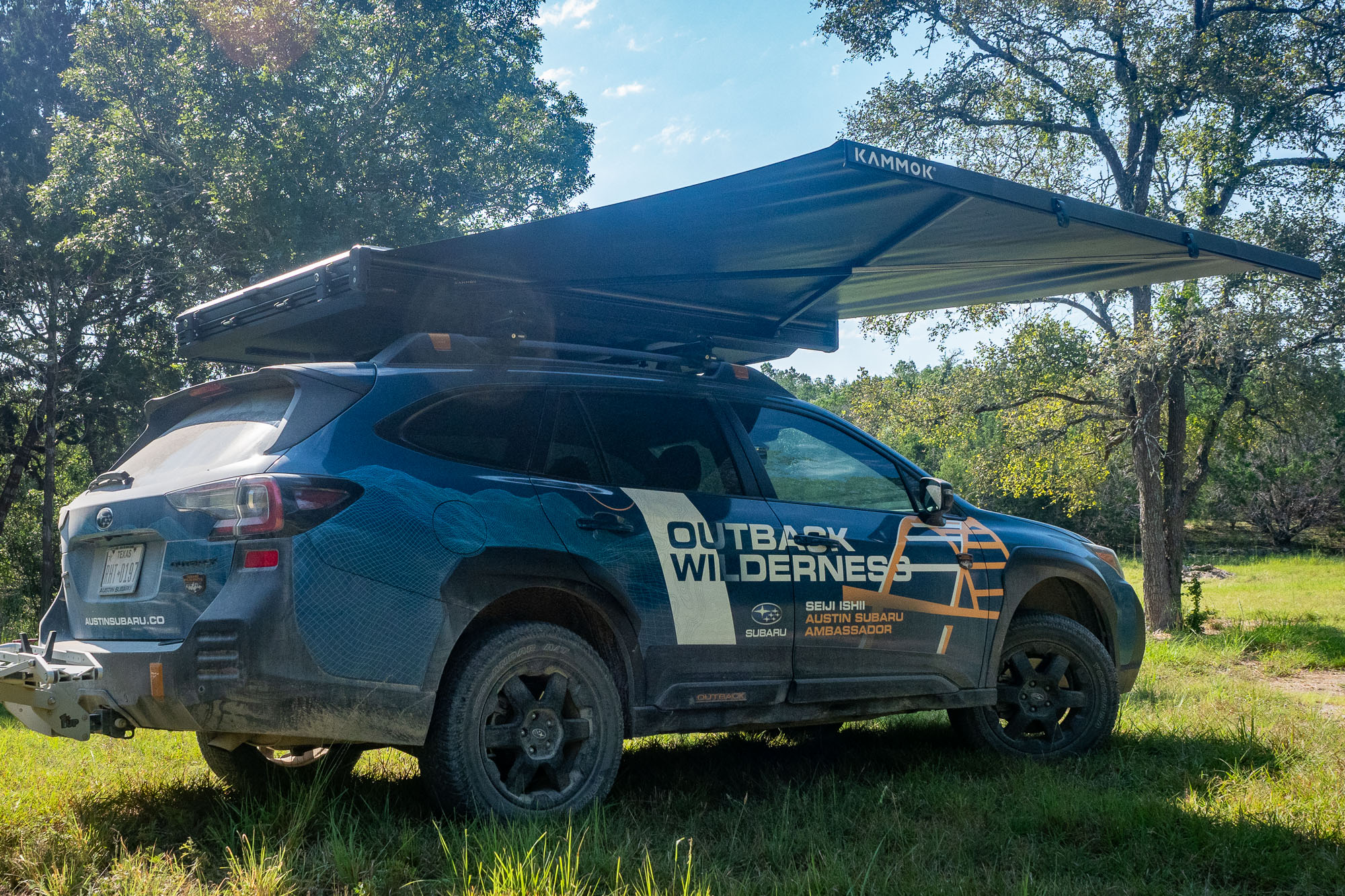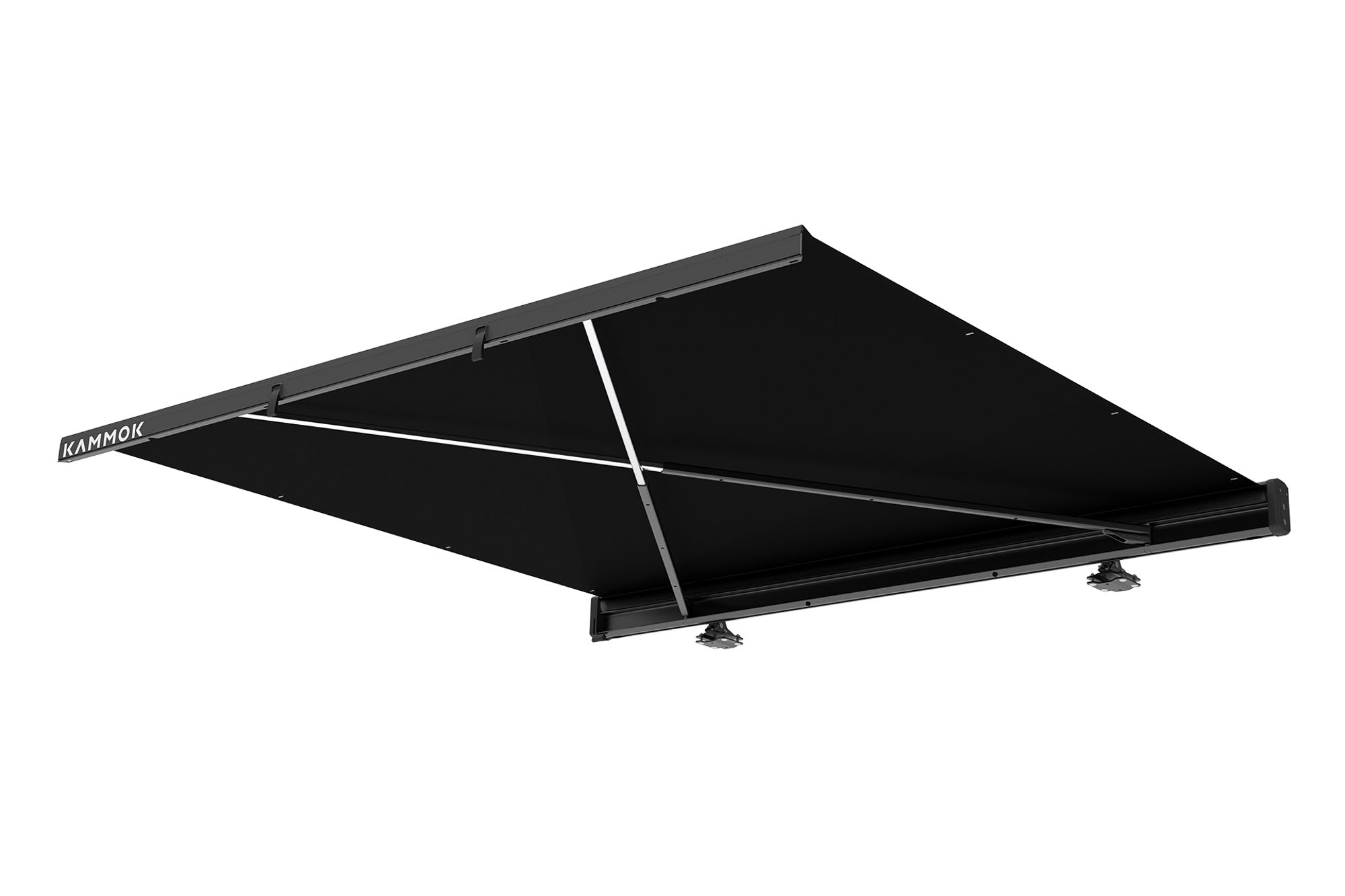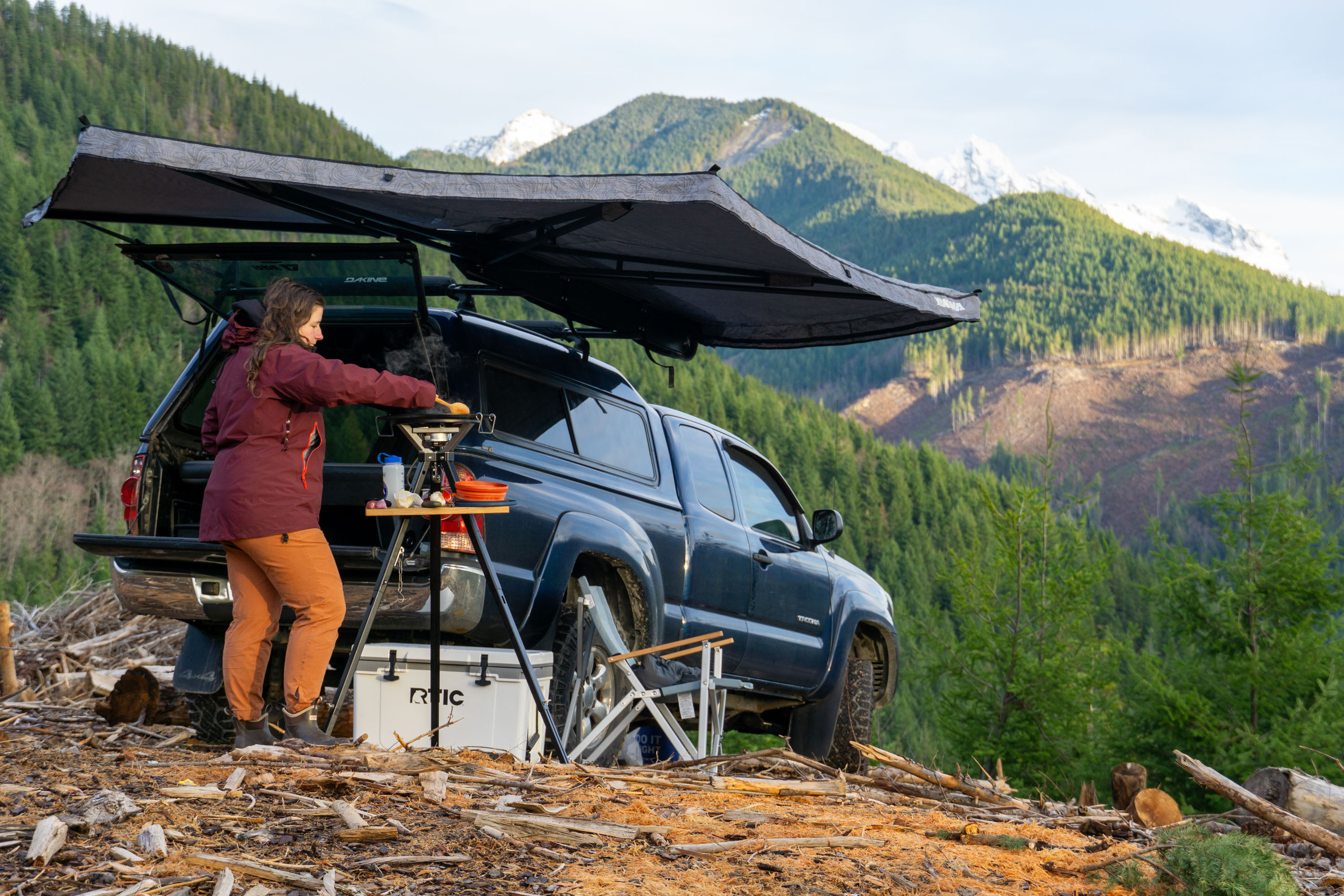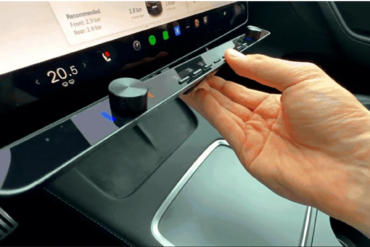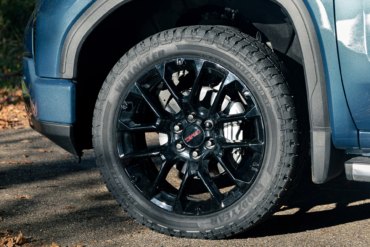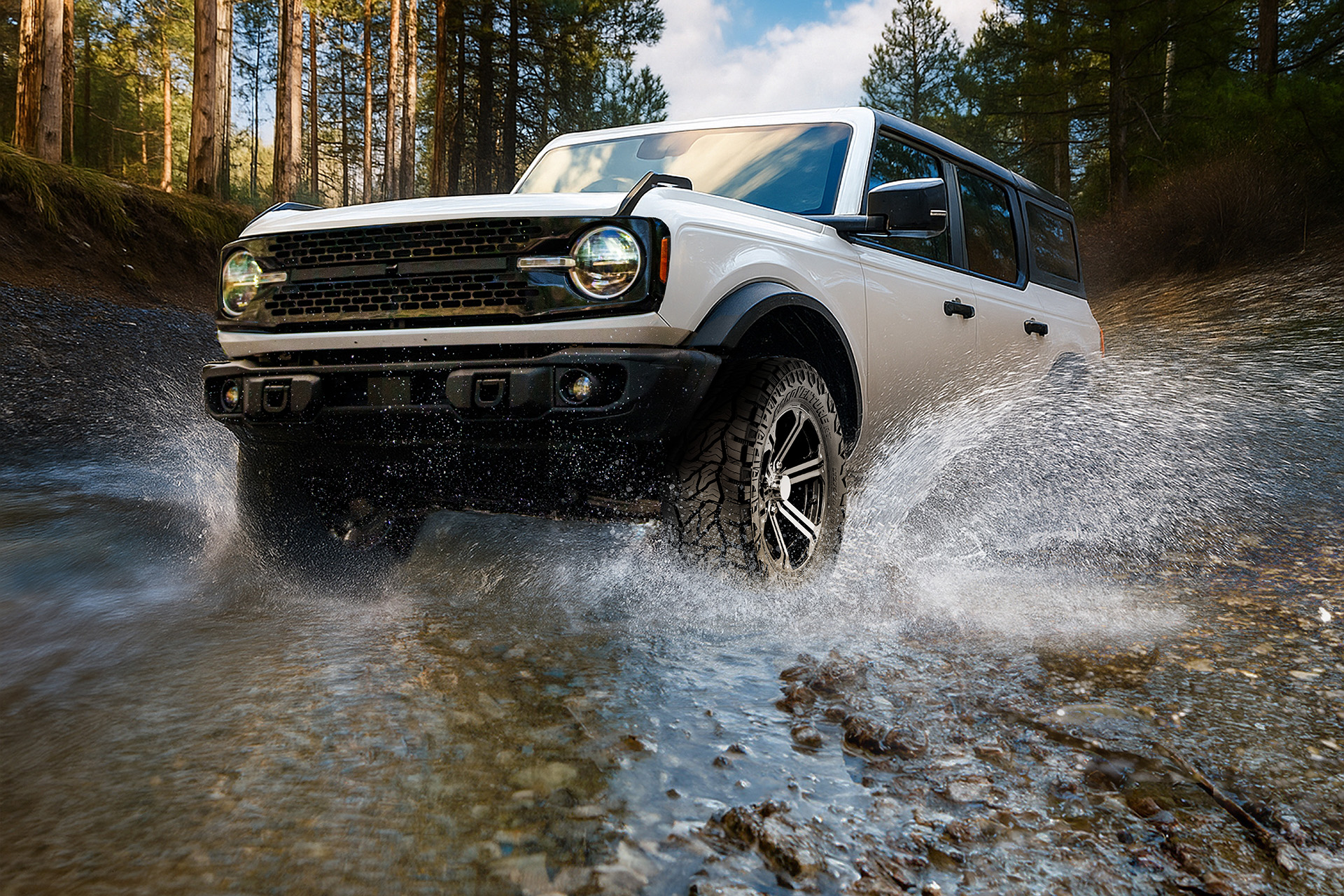Some vehicle awnings were quick to deploy and retract, but folded in winds I considered weak. Others required much more effort and sometimes two people to set up. Putting them away could be incredibly inconvenient and time-consuming. And I didn’t consider any of them “adventure-ready,” meaning I could get them up as soon as a rainstorm blew in, and they could endure at least moderate winds.
When Kammok released its Crosswing awning, I was intrigued but wasn’t hopeful that it would fulfill my requirements for adventure-readiness. But Kammok is close by in Austin, and the brand offered me a unit that was cosmetically damaged in shipment with no strings attached. So, I acquired the 7-foot-wide version (the brand also has a 5-footer) for my Subaru Outback Wilderness.
For a solid year, the Kammok Crosswing lived on my car, and I deployed it at least a few times per week, which I never did with other awnings. Sometimes, it was for just a phone call or an online meeting. And, of course, I used it during overnight or longer camping trips. It withstood two brutal Texas summers, spring flooding, a Colorado road trip, and, incredibly, an icy winter.
In short: The Kammok Crosswing changed how I think about and use vehicle awnings. The class-crushing speed at which it can be deployed and retracted removes all the inconveniences and frustrations I’d had with other awnings. The Crosswing is in an echelon by itself, and its pure convenience has led me to use it so much more than any other awning in my decades of adventuring and daily living. The self-supporting, cantilevered design withstood wind better than others as well.
- Awning fabric material: 8 oz. PU-coated polyester W/UV resistance
- Housing material: Aluminum and ABS plastic
- Hardware materials: 6061 extruded aluminum, stainless steel, hardened steel
- Awning coverage area: 42 sq. ft.
- Weight: 45 lbs.
Pros
- Incredibly quick deployment and retraction
- Stable without guy lines or legs
- Slick execution overall
Cons
- Pricey
Kammok Crosswing Review
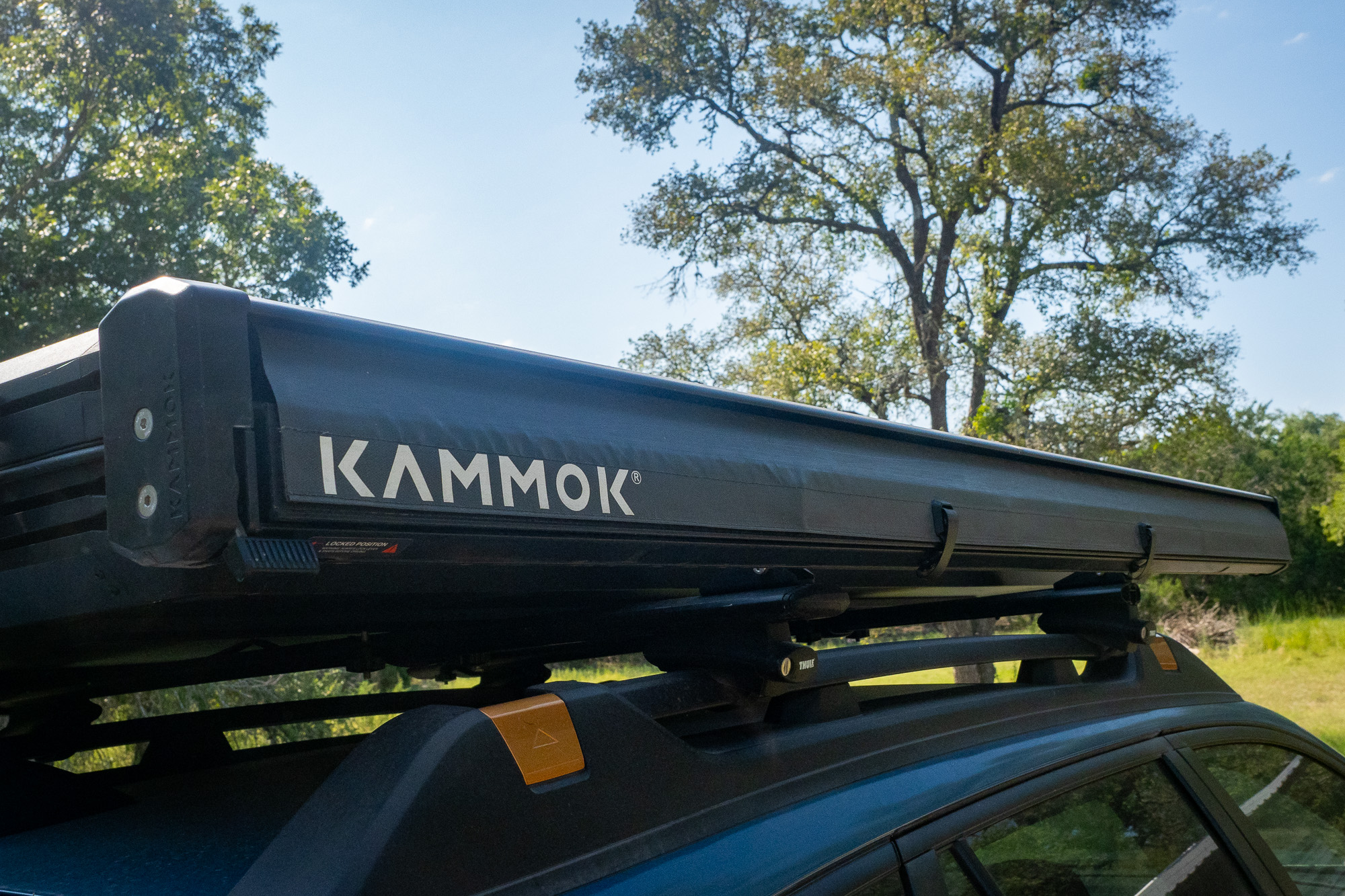
Specifications
The awning fabric is a heavy-feeling 8-ounce 600D PVC-coated polyester that is waterproof and mildew- and UV-resistant. The housing is powder-coated aluminum with ABS end caps, while the mounting hardware is powder-coated hardened steel.
The supporting arms under the fabric are powder-coated 6061 extruded aluminum (this was updated to an anodized finish). Internal mechanical components are rustproof stainless steel.
The Kammok Crosswing housing has two standard T-tracks on the back for mounting purposes and one on the bottom to attach accessories such as lights and gear hooks.
When closed, the unit measures 88″ x 3″ x 5.7″. The awning can deploy to three lengths: 35.5 inches, 58.5 inches, and 77.5 inches. At full length, the fabric covers 42 square feet. Kammok claims the 7-foot Crosswing weighs 45 pounds.
Kammok offers the Crosswing in a 5-foot wide version (MSRP $950) in addition to the 7-foot model (MSRP $1,100) reviewed here. Both come in charcoal gray or desert tan.
Mounting
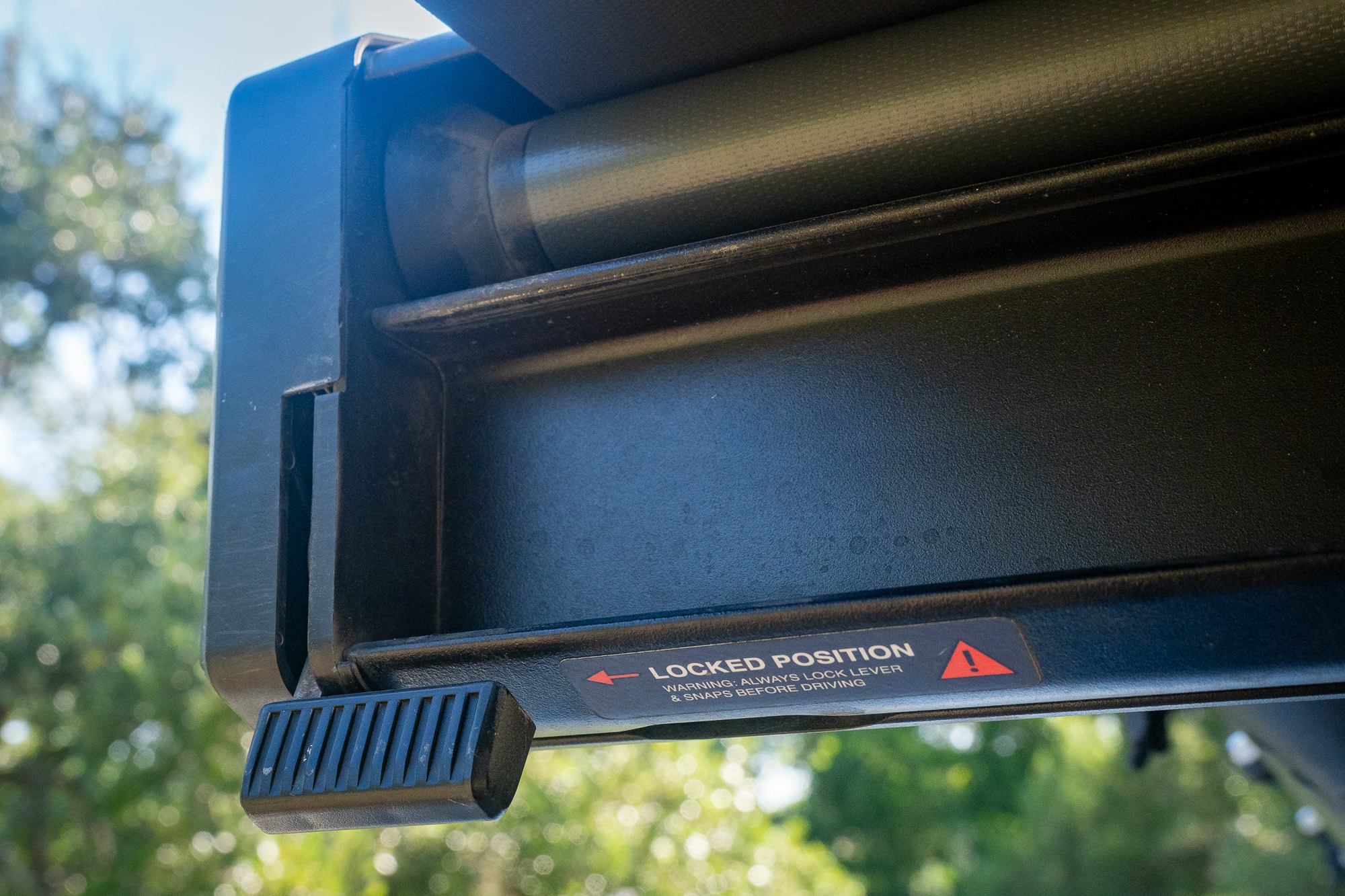
Mounting the Kammok Crosswing to my Thule cartop rack crossbars was a single-person affair that only required a 5mm and 8mm hex wrench.
Like any other rack accessory, a bracket was attached to each crossbar’s T-slot. It was anchored with two standard T-track square nuts inside the crossbar and two hex bolts on top. The same method secured two awning mounting brackets into one of two T-slots on the back of the Crosswing housing.
The awning-mounted brackets hooked into the crossbar brackets, and I was able to adjust the horizontal position and awning angle to my liking. For rooftop racks without T-slots, Kammok includes crossbar clamping hardware.
Kammok Crosswing Deployment & Retraction
The Kammok Crosswing deployed and retracted back into driving mode faster and easier than any other awning I’ve ever used or seen by a huge margin. It wasn’t even in the same ballpark. I could do it by myself, consistently, in the same amount of time, every time.
There is no overestimating how this affected my view of using a vehicle awning. I could deploy or retract the awning in less than 30 seconds without hurrying, regardless of conditions. This opened up so many more use cases.
Setting up the awning consisted of moving a lever on the left end cap to the unlocked position, unbuttoning (updated to Fidlocks) two loops that connected the leading edge of the awning to the case, and then pulling on these loops to deploy the fabric. I could stop at one of the three discrete awning lengths dictated by ball-and-detent mechanisms. These are fully housed inside the crossed support arms underneath.
Once at the desired awning length, I articulated the lever on the left end cap to add tension to the fabric and then put it back into the locked position. That’s it. There are no legs to deploy, no guy lines to anchor, nothing to assemble.
Taking the Kammok Crosswing down was essentially the reverse of the above steps. After unlocking the lever, an outward tug on the awning released it from the chosen position, and it almost pulled itself back in. I only needed to apply a little bit of pressure to nudge it along.
A spring-loaded spooling system kept the fabric under tension, and it smoothly disappeared into the housing. A few tugs on the lever tightened up the fabric, and then I locked it and snapped the finger loops to the housing.
It’s hard to convey how easy both of these actions are in comparison to all other vehicle awnings. Really, the Kammok Crosswing was in a class all by itself. I literally could have deployed and retracted the awning at least 10 times in the amount of time it took me to set up or stow the last crossover-vehicle-style awning I used. And the PITA factor was nonexistent with the Kammok Crosswing. Other awnings were often super-frustrating, especially when erecting or stowing them in inclement weather.
Kammok Crosswing Stability
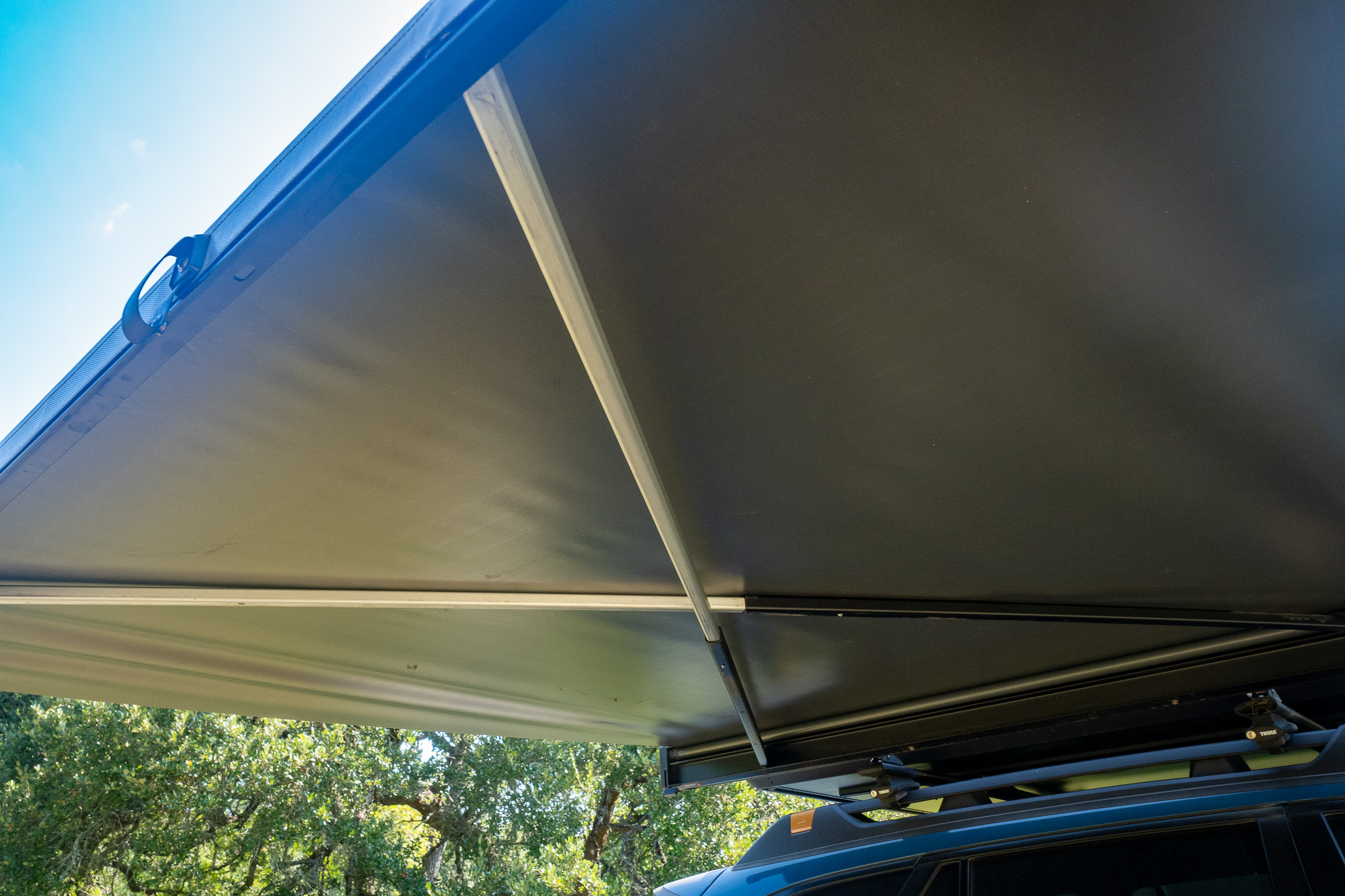
The self-supporting, cantilevered design of the Kammok Crosswing was not only quick to deploy and retract, but it also gave the awning more built-in stability than all other awnings I’ve used.
The two-segmented, square tube extrusions under the fabric are spring-loaded and hold the three set positions via a ball-and-detent mechanism. They cross to form an “X,” which lends support, just like spokes in a bicycle wheel. The spring-loaded fabric spool, which was ratcheted tight with the lever, further added stability by forming a cantilevered structure once the fabric was tight.
Again, the key is that the ball-and-detents in the supporting frame ensured rigidity and the ability to bear a compressive load from the tension ratcheted into the fabric. No legs or guy lines are required. This also kept the area under the awning clear and removed any issues from uneven or rocky ground. All this made the Kammok Crosswing more usable than other awnings.
In 20mph gusts, I could see and hear the awning moving, but I was never worried about damage, and none ever occurred. I was still confident at 25 mph, but the awning movement was concerning, so I guyed it out with two lines at the front two corners.
It seems like Kammok agrees with this reinforcing method, as it now offers an awning tie-down kit that includes two guy lines, two screw stakes, and two sandbags. Kammok also offers a pole pack to use under the front two corners for even more stability.
Most of the time, I used the awning at full length. Retracting it to the middle position greatly increased its stability; 25mph winds were no problem at this length. And when it was super-gnarly, retracting it to the shortest position didn’t offer much area under the awning, but at least it was a place to hole up and wait out the rain.
The Elephant Under the Awning
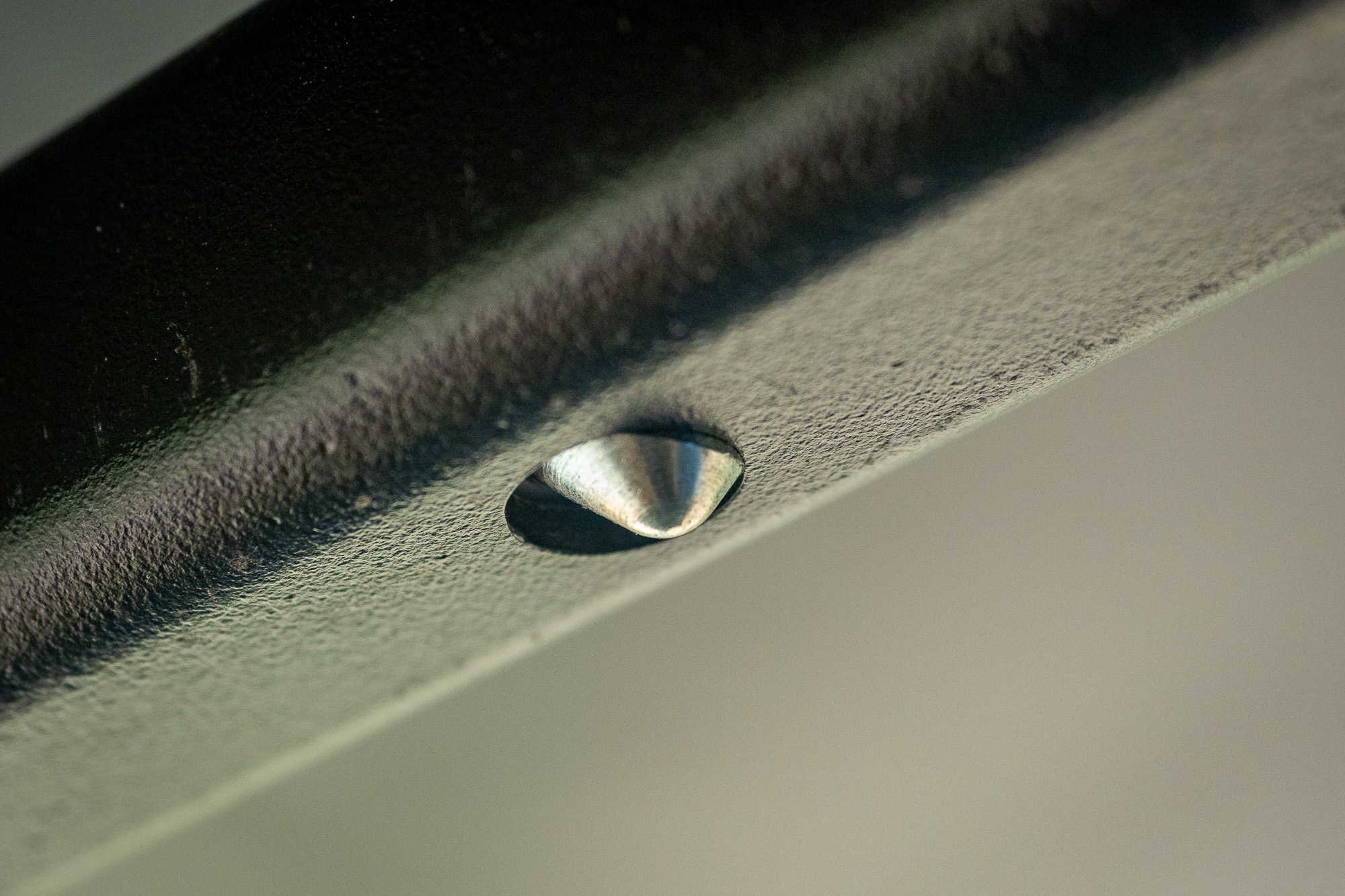
I cannot fathom one reason not to get the Kammok Crosswing other than the sock-you-in-the-wallet price. At both sizes hovering around the $1,000 mark, the Crosswing is more than twice the price of popular units like the ARB Touring Awning and even costs more than some 270-degree batwing models.
But when I consider the functional value more than the sticker price, if you have the means, I think it’s totally worth it. The ease, convenience, and speed at which I could set up and take down the Crosswing made me use it exponentially more often than any other awning I’ve used. After the first week with the Kammok unit, I adjusted my thinking and awning-deployment strategies.
I did not consider unfurling an awning unless I needed coverage for at least a few hours. On some models, it wasn’t worth it to me unless it was a day or overnight. But with the Kammok Crosswing, I would bust it out, even if it was for a quick phone call while I was on the go.
Being in Texas, the season to avoid late morning to early evening sun is long. And the Crosswing made my at least twice-weekly days of mobile working in Austin so much better. I had no excuse or reason to sit or stand in the sun for even a few minutes when it was hot.
I cannot overstate how much more I used the Crosswing awning than others. I estimate that within the first three months of use, I had deployed it more than all my other car and van awnings I had owned combined.
Kammok Crosswing Review: Final Thoughts
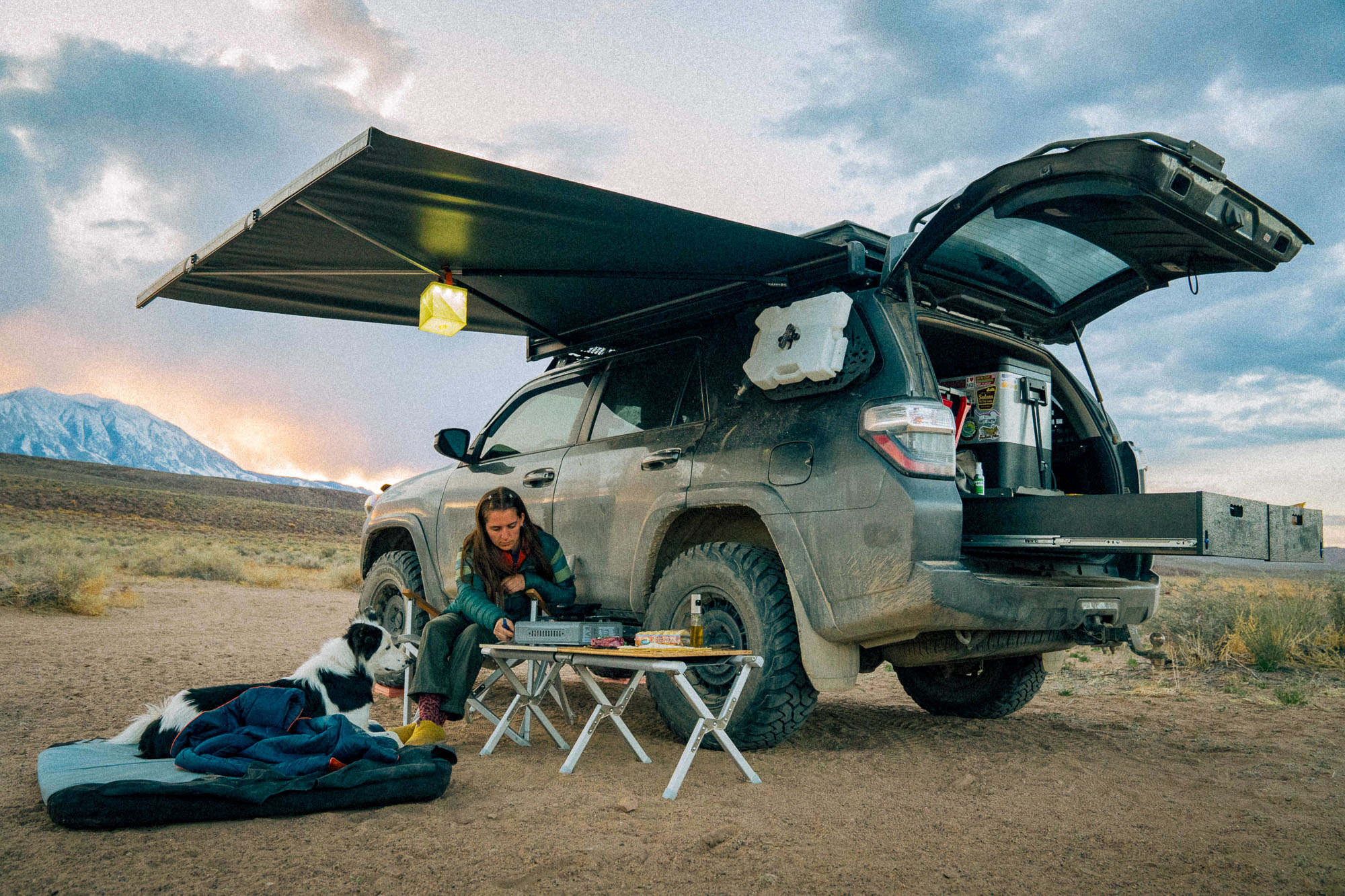
The Kammok Crosswing is a significant investment, to be sure. Four digits is a lot to pay for a vehicle awning, especially considering there are totally usable versions for as little as a few hundred dollars.
But the less-than-30-second setup and the equal take-down speed rendered the Kammok Crossing into an equivocally much more usable category. I didn’t need to justify any time or effort to take advantage of the shade or shelter from precipitation. Even pulling off the road to take a 10-minute phone call or Zoom meeting was enough. There was no trepidation and zero hassles to sheltering in the sweet shade on a hot summer day.
Incredible convenience and usability didn’t come at the cost of stability or durability. None of my other awnings could withstand the winds the Kammok did, and if it required reinforcement, it was easily managed with the guy lines I had on hand. Additionally, Kammok offers accessories to shore up the Crosswing. But I only needed to tie it out once in the entire year of use.
Finally, after a year of sitting on my car in the brutal Texas sun and equally brutal rain storms and tornado-watch winds, the Kammok Crosswing has suffered zero structural damage.
